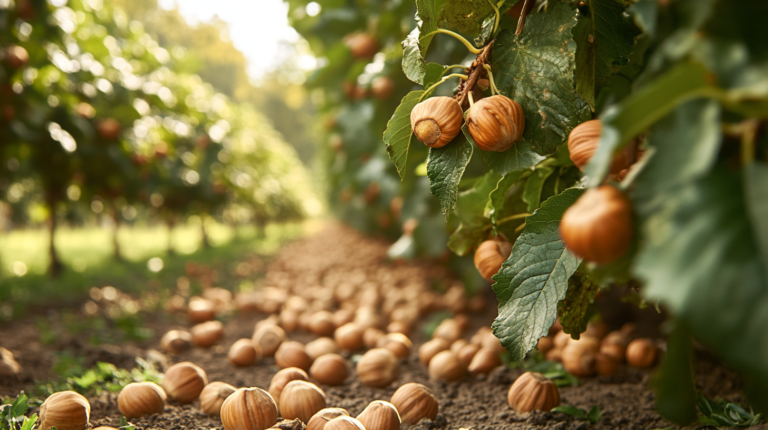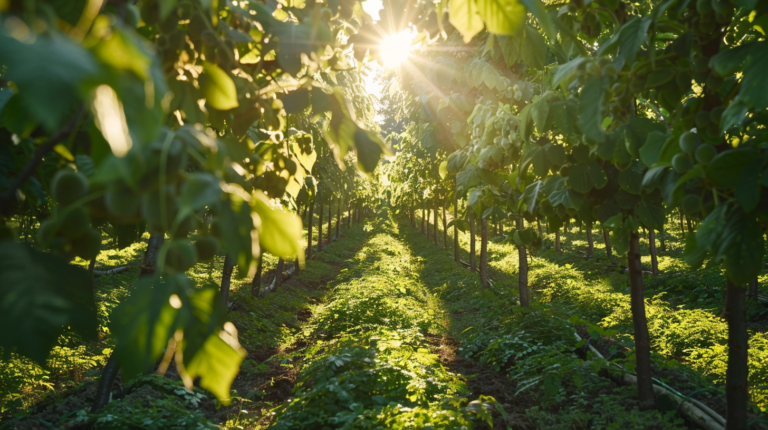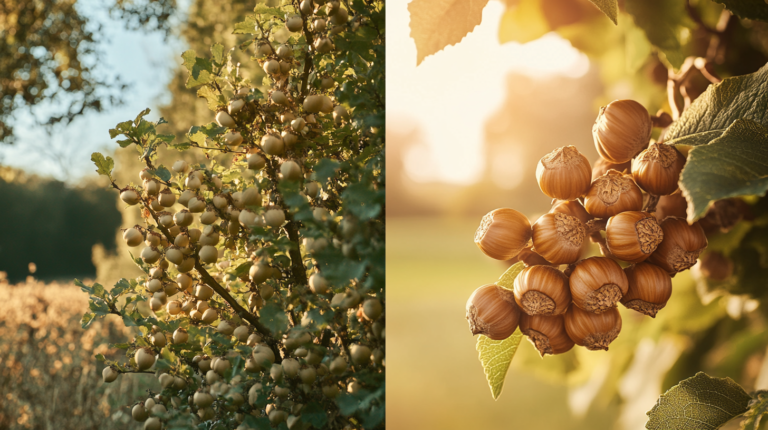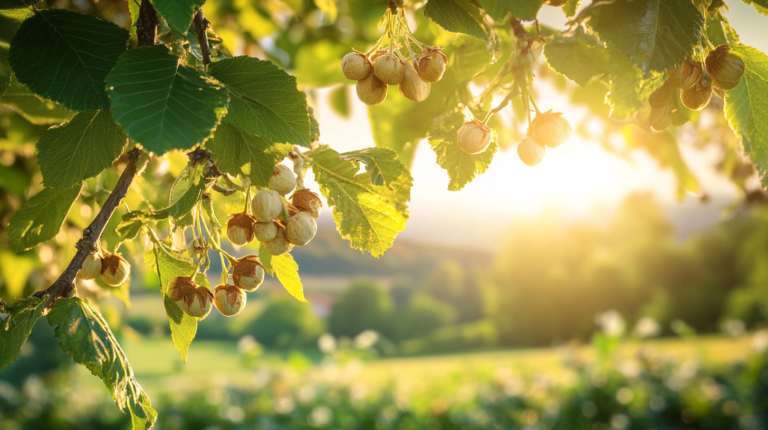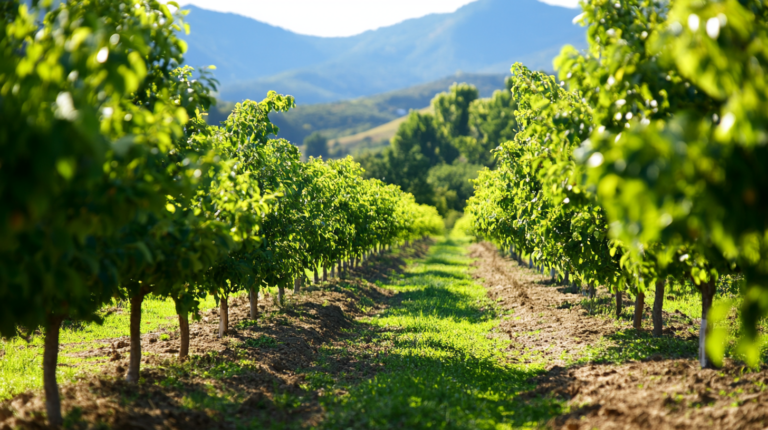Choosing the Right Hazelnut Varieties for Your Climate
Selecting the appropriate hazelnut variety for your specific climate is crucial for successful cultivation. Hazelnut trees, like many other crops, have distinct requirements and tolerances that vary by variety and environmental conditions. This article provides a detailed analysis based on the provided sources, offering insights into climate requirements, specific varieties, and practices to ensure the best yields.
Climate Requirements
General Climate Needs
Hazelnuts thrive in moderate climates where harsh weather is rare. They are particularly sensitive to extreme or erratic weather events such as late-spring frosts, freezing rain, heavy rain, and extreme drought or heat (USDA, n
.d.). Hazelnuts bloom in winter, and warm winter days can cause premature blooming and budding, making them susceptible to frost damage (USDA, n.d.).
Water Requirements
Consistent irrigation is essential for hazelnut trees, especially during the growing season. The European hazelnut, for instance, requires between 80 and 100 mm of water per month from April to August (Almanac, n.d.). This indicates a need for reliable water sources, particularly in regions experiencing reduced summer precipitation due to climate change (Almanac, n.d.).
Varieties and Their Adaptability
European Hazelnuts (Corylus avellana)
- Climate Suitability: European hazelnuts are best suited for regions with moderate climates and well-defined seasons. They do not tolerate extreme cold or heat well (Arbor Day Foundation, n.d.).
- Characteristics: These trees produce larger nuts, often free-falling, and can be trained to grow as trees (Arbor Day Foundation, n.d.). They are highly valued for their larger nut size and quality.
- Challenges: European hazelnuts are susceptible to Eastern Filbert Blight (EFB), a fungal disease that can devastate orchards unless resistant varieties are chosen (Oregon State University, 2021).
American Hazelnuts (Corylus americana)
- Climate Suitability: Highly adaptable to a wide range of climates, including colder regions (Arbor Day Foundation, n.d.).
- Characteristics: These trees produce smaller, thick-shelled nuts and have a high resistance to EFB. They can thrive in less ideal soil conditions (Arbor Day Foundation, n.d.).
- Advantages: The high disease resistance and adaptability of American hazelnuts make them suitable for diverse climates and soil types (Arbor Day Foundation, n.d.).
Beaked Hazelnuts (Corylus cornuta)
- Climate Suitability: Beaked hazelnuts are adaptable to various climates, including colder and more temperate regions (Northern Ridge Nursery, n.d.).
- Characteristics: These trees produce small, thick-shelled nuts with prickly involucres. They also exhibit high resistance to EFB (Northern Ridge Nursery, n.d.).
- Advantages: Similar to American hazelnuts in terms of adaptability and disease resistance, making them a viable option for diverse environmental conditions (Northern Ridge Nursery, n.d.).
Hybrid Varieties
- Climate Suitability: Hybrid varieties are designed to combine the best traits of European and American hazelnuts, making them more adaptable to different climates (Arbor Day Foundation, n.d.).
- Characteristics: These varieties offer larger nut sizes from European hazelnuts and disease resistance from American hazelnuts (Arbor Day Foundation, n.d.).
- Advantages: Hybrids expand the range of commercial hazelnuts that are well-adapted to the American climate while providing better nuts in terms of size and quality (Arbor Day Foundation, n.d.).
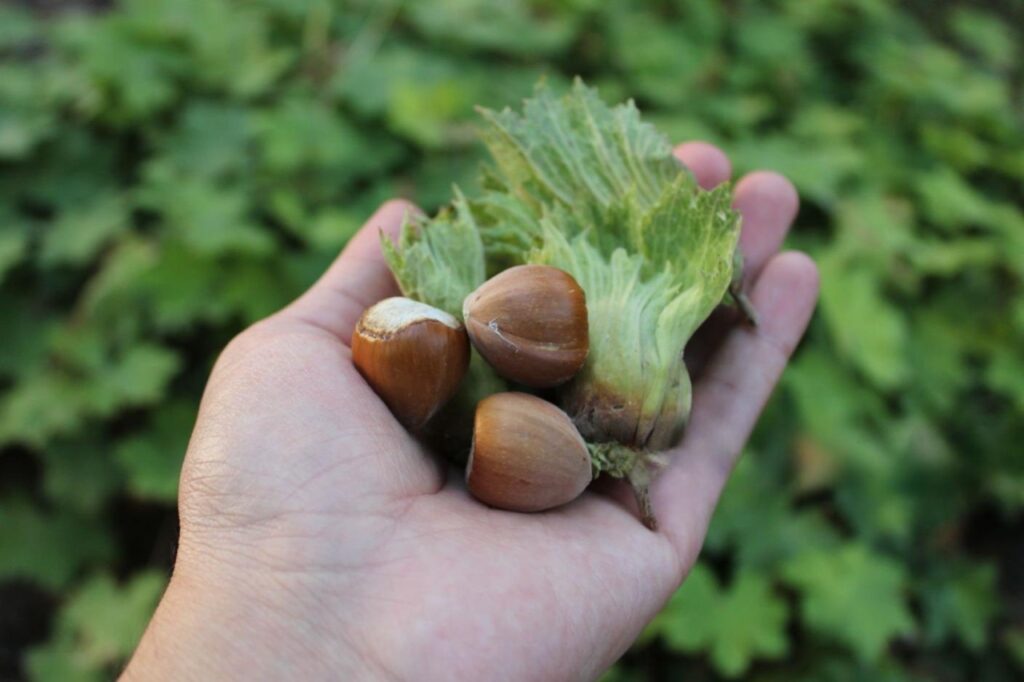
Specific Varieties for Different Climates
Oregon Varieties
Oregon is a major hub for hazelnut cultivation, particularly known for its breeding programs that have produced several notable varieties. Here are a few key varieties suited to different climate conditions:
- Jefferson: Popular for its ease of maintenance and high yields. It is suitable for regions with moderate climates and well-drained soils (Walnut Creek Nursery, 2021).
- Yamhill: Known for its high yield and adaptability to various growing conditions. However, it requires more pruning to maintain productivity (Walnut Creek Nursery, 2021).
- Wepster: This variety is prized for its early harvesting period and ease of management, making it suitable for regions with moderate climates (Walnut Creek Nursery, 2021).
- Dorris: Valued for its excellent blanching quality, making it desirable for foodservice and confectionery markets (Walnut Creek Nursery, 2021).
Climate-Resilient Practices
Implementing climate-resilient practices is essential to maximize the success of hazelnut cultivation. These practices help mitigate the adverse effects of climate variability and enhance the sustainability of hazelnut orchards.
- Site Selection: Avoid planting hazelnuts on land with southern exposures in regions prone to frost to prevent premature blooming (USDA, n.d.). Selecting a site with good air drainage can also reduce the risk of frost damage.
- Irrigation: Using drip irrigation systems can increase water use efficiency, especially in areas with reduced summer precipitation (USDA, n.d.). Drip irrigation helps ensure that water reaches the root zone directly, reducing water wastage and improving tree health.
- Soil Management: Implementing cover crops can help with soil moisture absorption and reduce soil erosion (USDA, n.d.). Cover crops also enhance soil fertility by adding organic matter and improving soil structure.
Economic Considerations
Establishment and Maintenance Costs
Establishing a hazelnut orchard requires significant investment. The initial costs include land acquisition, site preparation, planting materials, and irrigation systems. Maintenance costs encompass labor, fertilizers, pest management, and pruning.
For instance, the cost of land suitable for hazelnut farming ranges from $5,000 to $12,000 per acre, while the initial setup costs for equipment, irrigation, and infrastructure can range from $10,000 to $50,000 (Julian et al., 2011). These initial investments are crucial for setting up a productive and sustainable hazelnut orchard.
Production Costs and Revenue
Hazelnut trees typically begin producing nuts in the third to fourth year after planting, with full production achieved by the eighth to tenth year. Annual revenue from hazelnut production can vary widely depending on the variety, yield, and market conditions.
For example, a well-managed hazelnut orchard can generate annual revenues ranging from $50,000 to $500,000, with profit margins between 20% and 40% (Julian et al., 2011). The profitability of hazelnut production depends on factors such as orchard management practices, pest and disease control, and market demand.
Value-Added Processing
Investing in value-added processing equipment, such as roasters and grinders, can significantly enhance profitability. Value-added products like roasted hazelnuts, hazelnut butter, and hazelnut oil can attract premium prices in the market.
The cost of processing equipment ranges from $3,000 to $25,000, depending on the scale and complexity of the processing operations (Julian et al., 2011). Value-added processing not only boosts revenue but also helps farmers establish a loyal customer base by offering high-quality, locally processed products.
Environmental and Sustainability Considerations
Soil Health and Fertility
Maintaining soil health and fertility is crucial for the long-term productivity of hazelnut orchards. Implementing sustainable soil management practices, such as cover cropping, composting, and reduced tillage, can enhance soil organic matter, improve soil structure, and increase nutrient availability.
For instance, cover crops can help reduce soil erosion, enhance soil moisture retention, and provide habitat for beneficial insects (USDA, n.d.). Composting adds organic matter to the soil, improving its fertility and water-holding capacity.
Integrated Pest Management
Integrated Pest Management (IPM) strategies are essential for controlling pests and diseases in hazelnut orchards while minimizing the use of chemical pesticides. IPM combines biological, cultural, and chemical control methods to manage pest populations effectively.
- Biological Control: Use natural predators and parasites to control pest populations.
- Cultural Control: Practices such as crop rotation, sanitation, and pruning reduce pest habitats.
- Chemical Control: Apply pesticides judiciously based on monitoring and threshold levels.
Water Management
Efficient water management is critical for hazelnut production, particularly in regions experiencing water scarcity or variable rainfall patterns. Implementing water-efficient irrigation systems, such as drip irrigation, can optimize water use and reduce wastage.
Drip irrigation delivers water directly to the root zone, minimizing evaporation and ensuring that trees receive adequate moisture. Scheduling irrigation based on soil moisture monitoring and weather forecasts can also improve water use efficiency.
Future Prospects
Climate Change Adaptation
Climate change poses significant challenges to hazelnut production, including increased variability in temperature and precipitation, more frequent extreme weather events, and shifts in pest and disease dynamics. Adapting to these changes requires innovative approaches and resilient management practices.
Breeding programs are developing new hazelnut varieties with improved tolerance to climate stressors such as drought, heat, and cold (USDA, n.d.). These varieties are essential for sustaining hazelnut production in the face of changing climate conditions.
Technological Advancements
Advancements in agricultural technology offer promising opportunities for enhancing hazelnut production. Precision agriculture technologies, such as remote sensing, GPS, and data analytics, can optimize orchard management practices and improve productivity.
For example, remote sensing technologies can monitor crop health, soil moisture, and pest populations, allowing farmers to make informed decisions about irrigation, fertilization, and pest control. Data analytics can help optimize yield predictions and improve supply chain management.
Market Expansion
The global market for hazelnuts is expanding, driven by increasing consumer demand for healthy snacks and plant-based protein sources. This growth presents opportunities for hazelnut producers to increase production and explore new markets.
Developing robust marketing strategies and forming partnerships with food manufacturers can help capitalize on the growing demand for hazelnuts. Additionally, value-added processing and product diversification can enhance market opportunities and profitability.
Policy Support
Government policies and support play a crucial role in the growth of the hazelnut industry. Subsidies, grants, and research funding can help farmers adopt new technologies and practices, improve productivity, and reduce costs.
Collaborative efforts between governments, research institutions, and industry stakeholders can drive innovation and ensure
the sustainability of the hazelnut industry. Policies that support sustainable farming practices, climate adaptation, and market development are essential for the long-term viability of hazelnut production.
Conclusion
Choosing the right hazelnut variety for your climate is essential for successful cultivation. European hazelnuts are ideal for moderate climates, while American and beaked hazelnuts offer greater adaptability and disease resistance. Hybrid varieties provide a balance of larger nut size and resilience, making them suitable for a wider range of climates.
Implementing climate-resilient practices, such as site selection, efficient irrigation, and soil management, can enhance the success of hazelnut cultivation. Economic considerations, including establishment costs, production costs, and value-added processing, are critical for maximizing profitability.
Environmental and sustainability considerations, such as soil health, integrated pest management, and water management, are essential for the long-term productivity of hazelnut orchards. Future prospects for hazelnut production are promising, with opportunities for climate adaptation, technological advancements, market expansion, and policy support.
By selecting the appropriate varieties and adopting resilient practices, hazelnut producers can optimize yields, enhance profitability, and contribute to the sustainability of the hazelnut industry.
References
Almanac. (n.d.). Hazelnut farming startup costs. Retrieved from https://finmodelslab.com/blogs/startup-costs/hazelnut-farming-startup-costs
Arbor Day Foundation. (n.d.). Hazelnut expansion varieties. Retrieved from https://www.arborday.org/programs/hazelnuts/learn/expansion-varieties.cfm
Arbor Day Foundation. (n.d.). Types of hazelnuts. Retrieved from https://www.arborday.org/programs/hazelnuts/consortium/types.cfm
Julian, J. W., Strik, B. C., & Yang, W. Q. (2011). Economics of hazelnut production: The costs. Oregon State University. Retrieved from https://agsci.oregonstate.edu/sites/agscid7/files/oaeb/pdf/aeb0068.pdf
Northern Ridge Nursery. (n.d.). Growing and caring for American hazelnut (Corylus americana): A complete guide. Retrieved from https://northernridgenursery.com/blogs/blog/growing-and-caring-for-american-hazelnut-corylus-americana-a-complete-guide
Oregon State University. (2021). Oregon hazelnut varieties in a nutshell. Retrieved from https://wcngg.com/2021/05/14/oregon-hazelnut-varieties-in-a-nutshell/
USDA. (n.d.). Climate-resilient hazelnuts in Oregon and Washington. Retrieved from https://www.climatehubs.usda.gov/hubs/northwest/topic/climate-resilient-hazelnuts-oregon-and-washington

